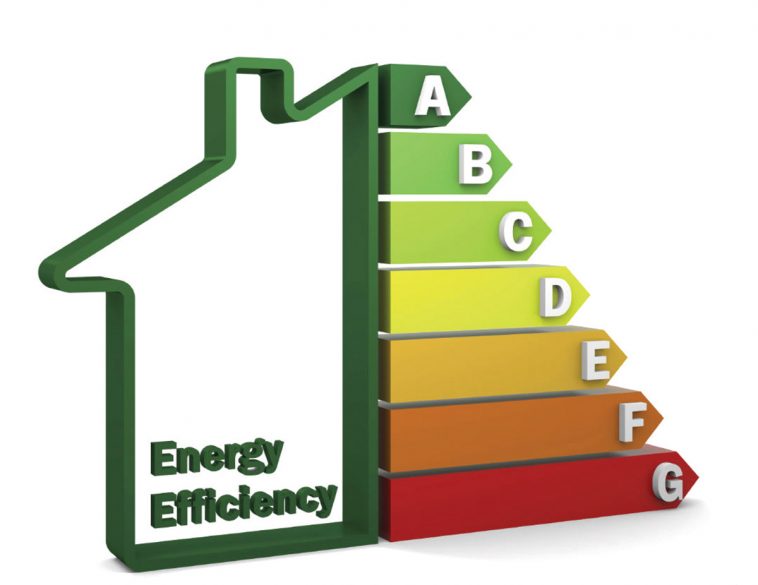An overview of how they work plus why changes to the energy requirements of the NI building regulations could still be some way away.
It seems a very long time since I served my two terms on the NI Building Regulations Advisory Committee (2006-2012). And even longer since the previous three years spent on an Industry Advisory Group formed by the then Department of Finance and Personnel to oversee the start of what Gerald Coulter, (who for many years was responsible, amongst other things, for writing Part F Conservation of Fuel and Power in Northern Ireland) called the biggest changes in building regulations he had ever seen.
Certainly it was a very active time on the energy and environmental front – European Directives, prompted by overwhelming evidence of the actions of human beings on climate change, requiring to be enacted in legislation in member states. Technical uplifts on standards for new buildings and requirements for certain existing buildings being extended or refurbished, and a whole new industry opening up around energy rating and the production of energy performance certificates.
So, what has happened to Part F since then? Well, frankly, not a lot! The Regulations in NI, especially on the energy side, had tended to follow those in England and Wales (with appropriate regional variations) with a lag of around two to three years.
However, the current Part F is dated 2012, while the England and Wales equivalent (Part L) was most recently amended in 2016 and went out to consultation on further changes earlier this year (2020). One of the main SAP software providers is still using the 2009 version for Northern Ireland while England and Wales use the 2012 version – an indication of how we are lagging behind.
SAP the software used throughout the UK to do the calculations that prove compliance to the energy requirements of the building regulations.
[adrotate banner="58"]In ROI changes have been coming thick and fast in recent years, with the latest revision of their Part L having been issued in 2019, which are now broadly similar to those in England and Wales and considerably better than those in NI.
So, currently, the key requirements for new dwellings in NI are pretty much as they have been for the past few years.
Limiting U-values and other parameters are the worst values allowable and you would not pass on the overall carbon target with these values without significant additional
measures such as low/zero carbon technologies (e.g. renewables).
Other limiting values include a normal maximum for air permeability of 10 m3/(h.sqm) and boiler seasonal efficiency (SEDBUK 2009) of 88 per cent for oil, mains gas or LPG or 86 per cent for oil-fired combi. Unlike in ROI, there is no minimum requirement currently for renewable energy systems.
Last year I gave a presentation at an energy event on the subject of my own house, a timber frame structure conceived and built in 2009 with the aim (successfully) of designing out the central heating system and, therefore incorporating very high levels of fabric energy efficiency compared with then normal practice.
It also compared well overall with the excellent Passivhaus standard, which has done much to raise awareness and encourage a step-change in dwelling energy performance. See the table below for side-by-side comparisons.
So, not surprisingly, the Timber Frame house outperformed the then Building Regulations standards by some way. More surprisingly (and perhaps disappointingly) it still beats them comprehensively over 10 years later – in fact they really don’t come
close (though the standards in ROI come a good deal closer than those in NI).
Even the Nearly Zero Energy Buildings (NZEB) standard (a sample specification is shown sourced from the Zero Carbon Hub) is still some way off the levels of the 2009 Timber Frame house.
In fairness, the Department of Finance has not been entirely idle on the energy side. Implementation of the European Energy Performance of Buildings Directive (EPBD) has been keeping them busy with updates in 2010, 2012 and 2016 and, more recently, an action plan for progression to NZEB.
Also, while the amendments to Part F for dwellings in 2012 represented an overall improvement of some 25 per cent on the previous 2006 levels, which was a considerable uplift, these applied mainly to new dwellings.
There have also been discussions recently around plans to improve the existing building stock (including Rates Relief measures) and encouragement of smart metering both of which, during a relatively quiet period for new builds, address the ever present rump of existing dwellings which, at any one time, represent the vast majority of homes and the poorest energy efficiency levels.
The Energy Saving Trust recently announced a forthcoming paper “Zero Carbon New Build – nine principles to underpin building standards” in which they reviewed the status of proposed changes to energy standards in new build homes across the UK.
While there have been no major revisions in any region for some time (England 2013, Scotland 2015, Wales 2014 and Northern Ireland 2012), key announcements have been made recently in all regions apart from Northern Ireland. The Trust suggested that, with the recent restoration of devolved Government and the publication of a major new consultation on Energy Strategy, announcements in this area would be expected over the coming months – indeed!
Also, it is noted that SAP 10 is still being industry-tested and it may be that the next uplift in Part F will await its full implementation. In any case, we do not need to be held back by Building Regulations.
Self-builders can, and do, work well ahead of the legal minimum standards especially for energy, as they have a vested interest in doing so. Let us be guided instead by the likes of Passivhaus and other ultra low energy houses. Let us not simply achieve the
worst standards possible narrowly avoiding prosecution; the watch-word is future-proofing.



